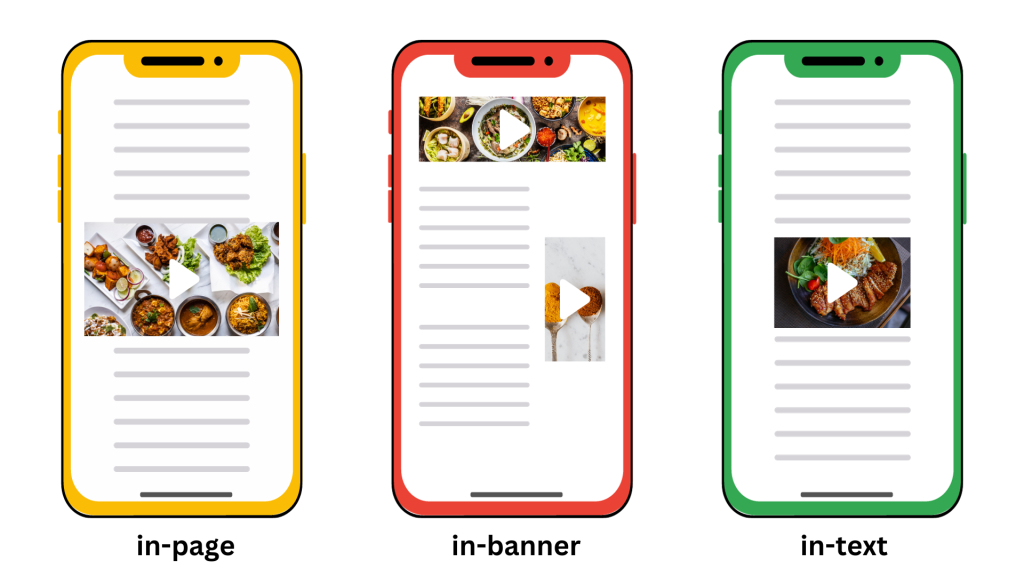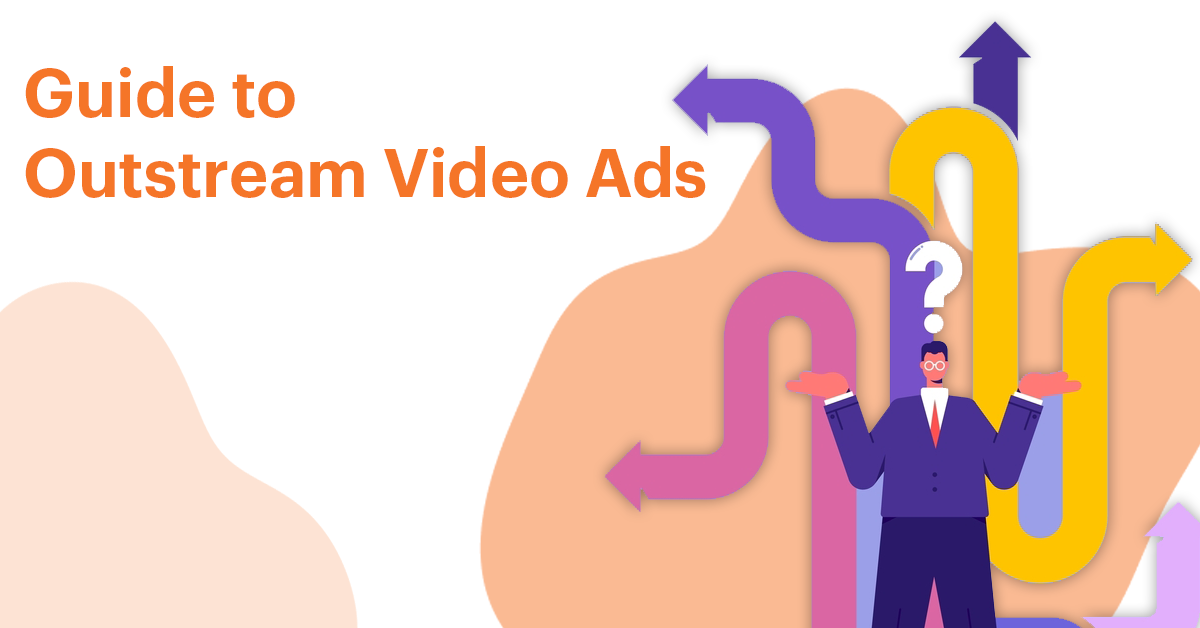The global market for digital ads grows and expands, and one of the most interesting aspects of this is video ads are growing in popularity and steadily making its way into budgets for marketing.
There are a variety of ads for video, and you’ll notice the differences. They’re displayed on the publisher’s websites or various channels, such as YouTube. They are sometimes embedded in the video’s content, while others appear to be “living their own lives.”
This is what we refer to as an outstream video advertisement. It is a reliable and non-disruptive method of capturing people’s attention and is increasing in demand for advertisers.
What Are Outstream Videos Ads?
Outstream Video Ads are an advertising method that allows advertisers to put videos outside of conventional video players, such as blogs, social feeds as well as mobile applications.
This means that the publisher’s web page does not have to include video content for advertisements to display on the site. In contrast, advertisers are able to place their videos in the text of a site or application in the event that they’re only text or images that appear to be a natural part of the player.
Like any other advertisement type, outstream videos let you use a range of methods of targeting to reach your target audience, which includes the demographics of your audience, their browsing habits, and other information.
Outstream video Ads Come In Tree Types:
In-page: A customized video player is placed on a publisher’s website to display video ads exclusively.
In-Banner: It look like display ad units, which are often placed at the top of the publisher’s website.
In-text: Text advertisements are embedded within the article’s text and trigger to begin playing when the user navigates to a particular place on the web.
Understanding the various types of out-stream advertisements and knowing their function helps you pick the most appropriate kind of video ads to get your message across to the right audience efficiently.

Instream vs. Outstream video
If you’ve tried to learn more about the subject, you’ve likely observed that, along with the outstream video advertisements, a third phrase is frequently used in instream video ads.
The reason for this is that they’re elements of the identical system that they’re part of, and one could consider them to have similarities. However, Instagram and outstream video ads are different types of ads that have their advantages and disadvantages.
IAB report shows that investment in the field of video ads is mostly focused on instream video, and the majority of respondents spend between 41 – the entirety of their budgets for this type of format. Outstream video ads are already outpacing in-banner video (IBV) in investment.
The best choice for your business is dependent on the factors that influence your budget, target audience, or the goals of your campaign. However, it’s difficult to determine the primary differences between these two.
Lets, know more
| Criteria | Instream Video Ads | Outstream Video Ads |
| Placement of Ads on Video | Placed within video content (pre-roll, mid-roll, post-roll) | Placed outside of video content (within articles, banners) |
| Viewer Control | Limited control (can skip after a few seconds if allowed) | More control (usually scroll-based, plays when in view) |
| Sound | Often plays with sound on by default | Usually muted by default, sound activated by user |
| Viewer Experience | Can be intrusive if not relevant to content | Less intrusive, integrated within non-video content |
| Visibility & Completion Rate | High visibility, typically higher completion rates | Lower visibility, completion rate depends on viewer engagement |
| Length | Typically 15-30 seconds | Varies, often shorter, around 5-15 seconds |
| Targeting | Can be highly targeted based on video content and viewer | Targeted based on page content and user behavior |
| Best For | Brand awareness, product launches | Engagement, expanding reach beyond video content |
Placement of Ads on Video
The main difference between outstream and instream ads is their placement within the video stream. This makes it simpler for us to differentiate between the two.
Instream ads play within a video stream and require a video player to serve them. You often see them on platforms like YouTube, where they appear before (pre-roll), during (mid-roll), or after (post-roll) the main video content.
Outstream video Ads, however, use a separate video player and typically appear within non-video editorial content, such as articles.
Viewer Controls
It’s a similar story in regards to how viewers are able to influence these ads.
Instream and Outstream Ads are generally auto-play. These ads auto-play when the video content loads, but some may need user interaction to continue playback, depending on their format.
The ads in the stream can be skippable after a short period (making the first few seconds crucial) or non-skippable. The ads in outstreams are typically more straightforward to scroll through and end immediately.
Sound
Instream and outstream advertisements do not need the use of sound. They can be developed to function without or with sound according to your personal preferences and objectives.
Instream videos tend to be more likely to appear with a soundtrack or a speech. They are also more likely to have a soundtrack than outstream ads.
Viewer Experience
Unlike outstream ads, instream ads can disrupt the viewer’s experience, especially if they are long or frequently shown. Because they are part of the video’s content, these ads can impede you from watching even for a couple of seconds.
Outstream videos are less intrusive since they aren’t embedded within video content, allowing viewers to engage without interrupting their experience.
Visibility and Completion Rate
The majority of instream ads offer a better rate of completion and greater exposure because they are considered to be in the same content that you’re watching and engaged with.
However, outstream video ads don’t receive the same level of attention as instream ads. They can be easier to skip or scroll past, leading to lower engagement. In addition, they typically aren’t as effective in terms of completion and less visibility.
Length
The ads in Instream are usually shorter than ads in the outstream format and vary from just a couple of seconds up to two. The reason for this is that viewers tend to skim ads that are longer as they interfere with the content they’re viewing.
Outstream ads can differ in terms of length, but they can be longer than the ads that are instream, offering more chances for storytelling and improving users’ engagement.
Targeting
With regards to targeting the audience, both of these formats share many similarities and differences. Both offer a variety of options to reach the desired group, which includes the demographics of your audience, their behavior, locally targeted advertising, and so on.
Best For
Instream video ads are ideal for businesses who need to get their message across to a broad public audience with an excellent video advertising experience paired with the video users’ view. Apart from a great audience, it could also boost the brand’s visibility.
Conclusion
Outstream Video Ads can expand reach beyond conventional video ads, making them ideal for performance-based campaigns focused on driving site traffic or increasing app installations.
As digital advertising continues to evolve, video ads, especially outstream formats, are becoming an essential part of marketing strategies. Outstream video ads offer a non-intrusive way to engage audiences, providing flexibility in placement and targeting without the need for traditional video content.
While instream ads remain dominant in terms of visibility and completion rates, outstream ads are gaining momentum for their adaptability and user-friendly approach. Choosing between these formats depends on your campaign goals, budget, and audience preferences.
By understanding the unique features and benefits of outstream video ads, advertisers can create effective strategies to reach and resonate with their target audience in the ever-growing digital landscape.

